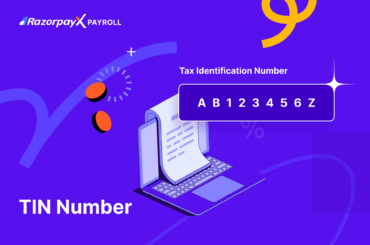Table of Contents
What is Human Resource Management?
Human resource management (HRM) is the strategic and organized approach to managing an organization’s workforce. It involves attracting, developing, and retaining employees to help the organization achieve its goals.
HRM is all about managing an organization’s most valuable asset: its people. HR helps an organization achieve its strategic goals and gain a competitive advantage.
Explore Automated HR & Payroll
Importance of HRM
- Attracting and retaining top talent: In today’s competitive job market, it’s more important than ever for organizations to attract and retain top talent. HR can help by creating a positive employer brand, developing competitive compensation and benefits packages, and providing opportunities for employee growth and development.
- Improving employee engagement: Engaged employees are more productive, more satisfied with their jobs, and more likely to stay with the organization. HR can help improve employee engagement by creating a positive work environment, fostering communication and collaboration, and recognizing and rewarding employee contributions.
- Boosting productivity: A well-managed workforce is a productive workforce. HR can help boost productivity by providing employees with the training and resources they need to do their jobs effectively, by creating a culture of accountability, and by rewarding high performance.
- Reducing costs: HR can help reduce costs by streamlining hiring and onboarding processes, by managing employee benefits effectively, and by preventing legal and compliance issues.
- Improving compliance: HR can help organizations comply with all applicable employment laws and regulations, which can help avoid costly fines and penalties.
- Enhancing corporate reputation: A strong HR function can help enhance an organization’s corporate reputation by creating a positive work environment, attracting top talent, and being a good corporate citizen.
Aim of Human Resource Management
The objectives of human resource management (HRM) can be broadly categorized into three main areas:
1. Organizational Objectives:
- Achieving strategic goals: HR helps the organization achieve its overall strategic goals by ensuring it has the right people in the right roles, with the necessary skills and knowledge. This involves workforce planning, talent acquisition, and employee development.
- Boosting productivity and performance: HR strives to create an environment where employees are motivated, engaged, and able to perform at their best. This involves initiatives like performance management, training and development, and compensation and benefits that incentivize high performance.
- Maintaining compliance: HR ensures the organization adheres to all relevant labour laws and regulations, avoiding legal issues and fostering a safe and ethical work environment.
2. Employee Objectives:
- Attracting and retaining top talent: HR aims to find and keep the best people for the organization by offering competitive compensation and benefits, providing opportunities for growth and development, and creating a positive and supportive work environment.
- Ensuring employee well-being and safety: HR prioritizes employees’ physical and mental well-being by implementing safety measures, promoting work-life balance, and offering employee assistance programs.
- Fostering a culture of engagement and inclusion: HR creates a work environment where everyone feels valued, respected, and heard. This involves diversity and inclusion initiatives, open communication, and opportunities for employees to contribute their ideas and perspectives.
3. Functional Objectives:
- Optimizing HR processes: HR continuously seeks to improve its own efficiency and effectiveness by streamlining processes, leveraging technology, and adopting data-driven approaches.
- Building strong relationships with employees and managers: HR acts as a bridge between employees and management, fostering trust, communication, and collaboration.
- Contributing to the organization’s overall success: HR demonstrates the value it brings to the organization by measuring its impact on key metrics like employee engagement, retention, productivity, and profitability.
These objectives are interconnected and constantly evolving. Effective HRM requires a strategic and balanced approach that considers the needs of the organization, its employees, and its stakeholders.
Functions of HRM
Organizational Objectives:
- Achieving strategic goals: HR helps the organization achieve its overall strategic goals by ensuring it has the right people in the right roles, with the necessary skills and knowledge. This involves workforce planning, talent acquisition, and employee development.
- Boosting productivity and performance: HR strives to create an environment where employees are motivated, engaged, and able to perform at their best. This involves initiatives like performance management, training and development, and compensation and benefits that incentivize high performance.
- Maintaining compliance: HR ensures the organization adheres to all relevant labour laws and regulations, avoiding legal issues and fostering a safe and ethical work environment.
Employee Objectives:
- Attracting and retaining top talent: HR aims to find and keep the best people for the organization by offering competitive compensation and benefits, providing opportunities for growth and development, and creating a positive and supportive work environment.
- Ensuring employee well-being and safety: HR prioritizes employees’ physical and mental well-being by implementing safety measures, promoting work-life balance, and offering employee assistance programs.
- Fostering a culture of engagement and inclusion: HR creates a work environment where everyone feels valued, respected, and heard. This involves diversity and inclusion initiatives, open communication, and opportunities for employees to contribute their ideas and perspectives.
Functional Objectives:
- Optimizing HR processes: HR continuously seeks to improve its own efficiency and effectiveness by streamlining processes, leveraging technology, and adopting data-driven approaches.
- Building strong relationships with employees and managers: HR acts as a bridge between employees and management, fostering trust, communication, and collaboration.
- Contributing to the organization’s overall success: HR demonstrates the value it brings to the organization by measuring its impact on key metrics like employee engagement, retention, productivity, and profitability.
HRM Software and Automation
HRM software and automation offer a plethora of benefits for organizations, streamlining processes, boosting efficiency, and empowering both HR teams and employees. Here’s a breakdown of the key advantages:
For HR teams:
- Time savings: Automate repetitive tasks like payroll, expense processing, and benefits administration, freeing up valuable time for strategic initiatives.
- Improved accuracy: Reduce human error with automated data entry and calculations, ensuring compliance and consistency.
- Enhanced reporting and analytics: Gain deeper insights into workforce trends, employee engagement, and performance through data-driven dashboards.
- Centralized information: Maintain a single source of truth for employee records, documents, and policies, accessible from anywhere.
- Streamlined workflows: Automate approvals, notifications, and task management, creating smoother processes for recruitment, onboarding, and leave requests.
- Reduced costs: Eliminate paper-based processes and manual data entry, leading to cost savings in printing, supplies, and personnel time.
For employees:
- Self-service portal: Access pay stubs, and benefits information, and request leave or training online, empowering employees to manage their own HR needs.
- Improved communication: Receive timely updates and company announcements through automated channels, fostering a more informed and connected workforce.
- Faster feedback and recognition: Leverage automated performance management systems for more regular feedback and timely recognition of achievements.
- Personalized learning and development: Access online training modules and career development resources tailored to individual needs and goals.
- Enhanced work-life balance: Automate routine tasks and streamline approvals, allowing employees to focus on core responsibilities and achieve better balance.
Explore Automated HR & Payroll
FAQs
What is human resource management?
HRM, or Human Resource Management, is the orchestra conductor of your company's people. It's about attracting the right talent, nurturing their skills, and keeping them happy and engaged.
What are the main functions of HRM?
Some functions of HRM include workforce planning, talent management, compliance, payroll and more.
What is the role of an HR manager?
An HR manager is responsible for carrying out the HR function within an organization. They ensure employees are thriving and have all the resources to contribute the best for the organization.





